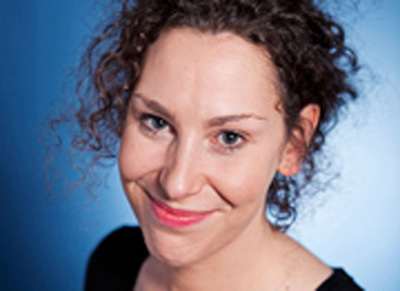- OT
- Professional support
- Health services
- Bridging borders
Bridging borders
OT investigates the impact of the pandemic on optometrists in Northern Ireland, Scotland and Wales – and asks how each nation is charting a path forward

15 June 2020
As daily life changed in the UK in the face of an unprecedented challenge, governments and industry bodies made difficult decisions about how to stem the spread of COVID-19.
Traditional divisions within and between professions were bridged as each country grappled with a much larger threat.
Although there have been common themes in the impact and pandemic response within the four nations of the UK, there are also differences.
Below, OT speaks with optical leaders about how the pandemic unfolded in Northern Ireland, Wales and Scotland – as well as the path ahead.
Northern Ireland
After routine General Ophthalmic Services (GOS) were suspended in Northern Ireland on 24 March, optometrists continued to provide urgent and essential eye care.
Health and Social Care Board Head of Ophthalmic Services, Raymond Curran, told OT non sight-threatening acute eye care is provided across the country through Primary Eyecare Assessment Referral Services (PEARS).
Mr Curran added that these services have continued operating in the wake of the pandemic, although they have been delivered in line with Government guidance to reduce footfall and travel as well as maintaining social distancing.
Essential and urgent care has been delivered virtually where possible during lockdown, and is only offered face-to-face after robust screening and using the appropriate personal protective equipment.
“About 70% of the urgent eye care has been virtual and primary care optometrists have really embraced that. That has been a really positive element to come out of this adversity,” Mr Curran emphasised.
Of the 271 GOS contractors within Northern Ireland, 270 practices opted to remain open during lockdown.
Mr Curran shared that practices were encouraged to form clusters within different areas.
“That is both to help their resilience and to protect their staff and wellbeing. They might cluster for a rota – one practice would offer care on Monday, another practice on Tuesday, for example. You can’t mandate that by contract so I haven’t directed it but that has been happening at a local level,” he highlighted.
This way of working has strengthened working relationships between practices, which were present before COVID-19 in Northern Ireland through practices sharing clinical resources in schemes such as the glaucoma care pathway.
“We have seen practices working together. Practice A might say ‘I’m not sure about that. My colleague down the road has an independent prescriber available today’,” Mr Curran said.
“Notwithstanding the commercial sensitivities around patients moving from one practice to the other, I think that can become fairly well embedded. I think COVID-19 will push us in that direction of more intra-professional sharing of resource,” he highlighted.

A temporary financial support scheme has been available to all contractors within Northern Ireland who either continue to offer urgent and essential eye care or are redeployed within the wider HSC.
Mr Curran highlighted that the support secures the income of contractors, proportionate to their income from previous years.
“As lockdown eases and as service provision returns to some level of normal through a phased approach, this will need to be reflected in the financial arrangements. ,” he said.
In Northern Ireland, personal protective equipment (PPE) has been distributed to all practices at no cost to the practice, as a temporary measure.
Mr Curran explained that PPE is available appropriate to the level of risk and clinical task.
“That has been widely applauded by primary eye care providers,” he added.
I don’t want to rush into a primary care optometry scenario where increased footfall and easing of service provision could contribute to a spike in cases
HSC is in the process of developing draft operational guidance for GOS contractors.
Mr Curran shared that a risk-stratified approach will be taken to easing lockdown restrictions within optometry in Northern Ireland, with different measures applied in red, amber and green stages.
“That phasing will mean that we may take a risk assessment for the various procedures that take place in High Street optometry. For instance, aerosol generating procedures might be the last things to be allowed. My view is that domiciliary eye care will probably be one of the last things that will be permitted,” he said.
Mr Curran emphasised that any easing of restrictions within optometry is linked to wider societal trends, such as the reproductive value, numbers of cases and deaths as well as the availability of PPE.
“All of those elements will inform where we are in the various stages of lockdown. I don’t want to rush into a primary care optometry scenario where increased footfall and easing of service provision could contribute to a spike in cases. We do need to be measured while still being mindful of the sensitivities around commercial pressures that practices face,” he said.
Wales
Optometry Wales chief executive, Sali Davis, shared with OT that during lockdown the number of open practices in Wales dropped from 352 to 89.
Each primary care cluster within Wales has at least one open optometric practice, with closed practices signposting patients to these hubs.
Practices that are closed receive an average monthly payment based on three years of GOS work, while practices that are open are paid an additional 125%.
PPE has also been provided to all practices that are open at no cost to the practice.

Ms Davis shared that the pandemic has prompted unusual ways of working within Wales, including an owner of a closed independent practice who is assisting an open Specsavers practice down the road.
“There are the commercial sensitivities that would have existed a couple of months ago and now you have this lovely working relationship,” she said.
Ms Davis estimated that around one in five optometrists who have lost work following the pandemic are volunteering through a partnership with Community Pharmacy Wales to deliver prescriptions to patients in the community.
A Welsh optometrist has also signed up to provide eye care alongside her GP husband to patients at a red site; where patients with COVID-19 symptoms can receive a variety of primary care services.
“Their logic was that they might as well work alongside each other because the husband is exposed on a daily basis anyway,” Ms Davis said.
Within the first two weeks of COVID-19, a practice with independent prescribers in Cardiff and Vale was set up as a community eye casualty negating the need for patients to go into hospital
Altered ways of working during lockdown have provided opportunities for optometrists to take on broader clinical roles.
For example, optometrists have been offering diabetic eye screening to pregnant women during lockdown following suspension of the national screening service.
Drawn out attempts to establish a community eye casualty pathway in Wales were also fast-tracked following COVID-19.
“Within the first two weeks of COVID-19, a practice with independent prescribers in Cardiff and Vale was set up as a community eye casualty negating the need for patients to go into hospital. Because Government have seen the statistics there and seen that we have been able to diagnose and manage patients in the community, they are now thinking that we can do this more widely,” Ms Davis shared.
Scotland
Following the outbreak of COVID-19, Emergency Eyecare Treatment Centres (EETCs) were established in Scotland for the provision of face-to-face care.
Community optometry practices continued to offer video and phone consultations during lockdown.
Optometry Scotland chair, David Quigley, shared with OT that optometrists in Scotland have made the best of a difficult situation.
“As with any professional who has a routine, the fact that routine has been unceremoniously broken without notice has been a huge challenge. People have had to adapt really quickly,” he said.
During lockdown, Mr Quigley estimated that only around 5% of calls to optometrists were emergencies that required referral to an EETC.
Most calls were either regarding routine care, contact lenses or the essential needs of vulnerable people or key workers.
Against such a horrendous economic backdrop there have been a lot of huge positives to come out of this, with people using their ingenuity.
Mr Quigley highlighted that Scottish optometrists and dispensing opticians have gone to great lengths to look after their patients, personally delivering spectacles to homes where they could not be posted.
In one case, a baby had a foreign body removed on the doorstep of their home while another optometrist covered the cost of a taxi to hospital after overhearing that a patient with iritis did not have money for the fare.
Optometrists have used video calling technology to assess motility and estimate facial measurements.
“Against such a horrendous economic backdrop there have been a lot of huge positives to come out of this, with people using their ingenuity. I think new ways of working are here to stay,” Mr Quigley said.
He added that the COVID-19 pandemic has also provided an opportunity for governments to reconsider how optometrists are used within the healthcare workforce.
“When you see community eye care stepping in to provide better control of people who are being referred into secondary care, that is a tremendous example that we need to continue,” Mr Quigley said.

Looking ahead to the easing of lockdown restrictions, Mr Quigley shared his view that opening hours are likely to be extended within optometry practices to allow for stringent social distancing measures.
“Community eye care needs to become an exemplar in infection control and social distancing. In order to do that, you will have to adapt your business model accordingly,” Mr Quigley added.
He shared that everyone has a part to play as the profession moves forward from the pandemic.
“Within the optometry community, everyone has knuckled down and got stuck in. Optometry Scotland has representation from every part of the sector – independents, multiples, larger groups and dispensing opticians. We’ve also established great ways of working with our colleagues in ophthalmology, and a fantastic working relationship with the Scottish Government Health Department whose foresight and ongoing support of community eye care has protected the visual health of the nation throughout the pandemic. The cooperation has been very good,” Mr Quigley concluded.


Comments (0)
You must be logged in to join the discussion. Log in